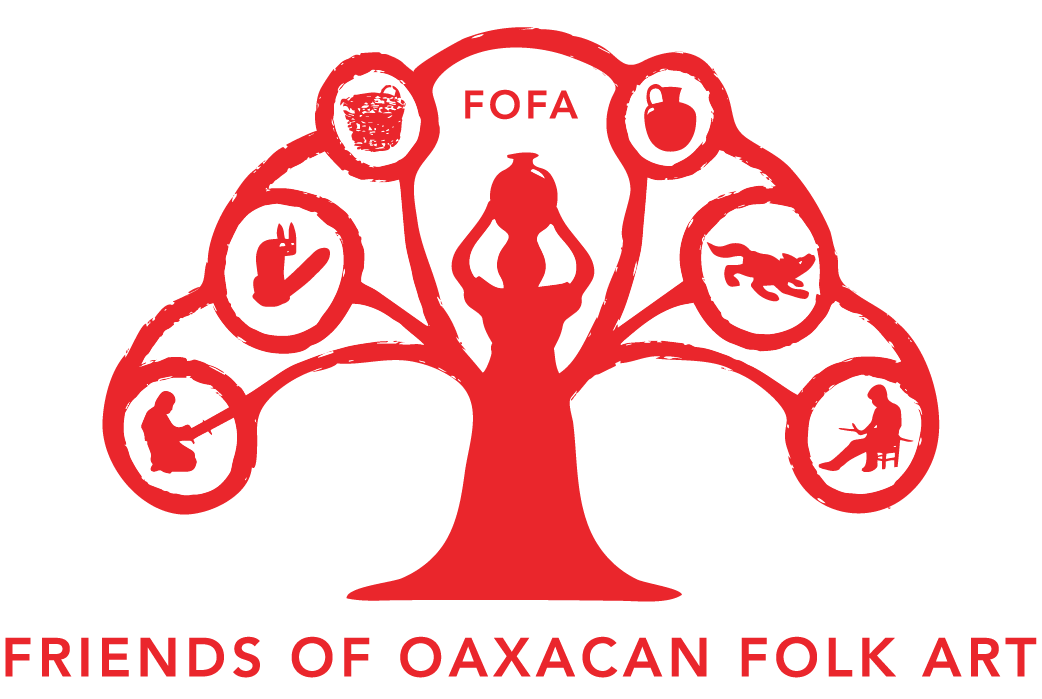MEET THE ARTISTS
BASKETRY
The ArtisTS
Baskets of innumerable types are sold in abundance in all indigenous markets and in shops. There are rigid laundry baskets with tops (canastos), rigid open baskets with handles used for marketing (canastas), bird cages, flexible round wastebaskets, and cases made of palm for eyeglasses and for money.
Many, however, come from distant pueblos well beyond the geographical radius we consider, in particular the Isthmus of Tehuantepec and the Mixteca (in northwestern Oaxaca). The pueblos relatively close to Oaxaca in which baskets are produced are Santa Cruz Papalutla, San Juan Guelavía and Magdalena Teitipac, all to the southeast. These are rarely visited by tourists and are off the beaten path.
Basketry in Oaxaca is not only for tourist consumption, but essential in everyday life. In the marketplace, staples such as grain and corn are measured by the size of the client’s basket, rather than by weight. For this reason ownership of baskets of various sizes is crucial, comparable to our need for a measuring cup. Baskets are also used for carrying and displaying produce, as well as for storage of dirty laundry.
Amador Martínez Antonio
Pueblo: Santa Cruz Papalutla, Tlacolula
Avenida Hidalgo #19
(From US) Landline: 011-52-951-553-8125
Cell: 011-52-951-181-2733
(In Oaxaca) Landline: 951-553-8125
Cell: 951-181-2733
Amador delights in weaving bamboo baskets used primarily for utilitarian purposes. His baskets range in size and strength, lending themselves to a variety of purposes. He also creates woven bamboo lamps, some laced with decorative, enameled metal segments. Amador is a man with a scholarly bent. Having won an award to study basketry in China in 1985, Amador became an important teacher of basketry, generously introducing artisans in many pueblos to the finer techniques he learned in China. He comments, “I won’t take my knowledge to the grave.”
Cira Maya Clemente
[Honorable mention, FOFA 2013 contest]
Pueblo of San Luis Amatlán
Pensamiento #6 3ª Sección
(From US) Landline: To be determined
(In Oaxaca) Landline: To be determined
Cira began weaving palm leaf coin purses when she was eight years old. She says that her family has been weaving palm “forever!” FOFA’s 2013 competition was her first competition, and she was a young teenager not even in high school when she submitted her entry. To celebrate Mother Earth, the theme of FOFA’s 2013 competition, Cira created a recyclable and reusable shopping bag made of pure natural palm. Her design required long palm leaves that she had to weave very tightly. She chose the rectangular form with a closely fitted lid for its practicality and comfort. With firm, flat straps the bag can be carried by hand or on the shoulder.
Dalia Esmeralda Vásquez Hernández
[2nd prize in “Other modalities,” FOFA’s 2018 contest]
Pueblo of San Juan Guelavia
Abasolo s/n Tercera Sección
(From US) Cell: 011-52-951-242-2654
(In Oaxaca) Cell: 951-242-2654
Very eager to learn new things, Dalia set about watching her uncle create objects from reeds and having him teach her how he does this work. For her, the jug represents the women of her village who are very important and who excel in many ways, just as men do. The jug embodies the everyday experience in pueblos of coming together to have breakfast and to drink hot chocolate. Participating and winning in the FOFA 2018 contest has been a fabulous experience for Dalia that motivates her to continue working, to bring attention to her town and to strive to excel.






